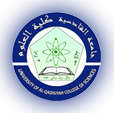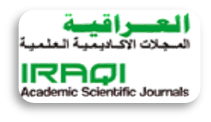Document Type
Article
Abstract
The regional and seasonal study of heavy metals were taken during February 2018 to November 2018, we determined the concentrations of seven heavy metals (Cd, Cr, Cu, Zn, Ni, Pb, Fe), by using Flame Atomic Absorption Spectrophotometer (FAAS) for sediment at Ten stations along Al-Delmaj lake they are (St.1, St.2 before feeding, St.2 after feeding, St.3, St.4, St.5 before discharge, St.5 after discharge, St.6, St.7, St.8), the stations were selected to cover all the marsh area. The Total Organic Carbon (TOC%) were analyzed. The results obtained for the sediment samples were low except for Fe and Pb which were relatively high. They were followed in order as: (Fe PbZnNiCrCu Cd). Higher concentrations of some heavy metals in sediments indicated that the sediments acted as a sink and source for these metals. Also the lowest mean concentration in some stations because of the fewness sources of pollution in this region whereas the highest mean concentration in other station because of there are a lot of pollution sources such as: Sewage pollutants, Municipal Waste, and Fertilizer waste. there is a variation in the values of studied elements they were ranged as follows: Cd: (0.222 - 0.283g/g), Cr: (1.472 - 1.685g/g), Cu: (0.305 - 0.362g/g), Zn:(1.947 - 2.826g/g), Ni: (1.738 - 2.206g/g), Pb: (3.696 -4.921g/g), Fe: (10.95 - 13.247g/g), The recorded concentrations of heavy metals are very importance to know the locations of pollution, its percentage and causes, sources and methods of treating pollution to preserve public health. The rate of Total Organic Carbon in this study (0.55- 0.97), the influence of the sediments with an equipped source for the organic materials, due to the degradation process that occurs on some neighborhoods in the region.
Keywords
Heavy metals, Sediments, Al-Delmaj Marsh.
Recommended Citation
Murad, Faris Nasir; Hameed, Abbas; and Al-Saad, Hamid Taleb
(2020)
"Heavy Metals Concentrations In Sediments Of Al-Delmaj Marsh, Al-Qadisiya /Wasit Governorates/ Southern Iraq,"
Al-Qadisiyah Journal of Pure Science: Vol. 25
:
No.
2
, Article 16.
Available at:
https://doi.org/10.29350/2411-3514.1205
Creative Commons License

This work is licensed under a Creative Commons Attribution-NonCommercial-No Derivative Works 4.0 International License.










